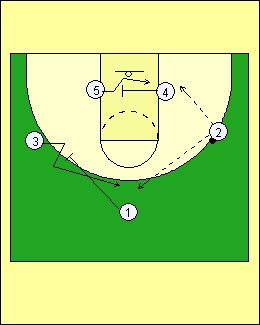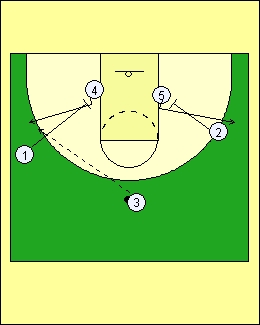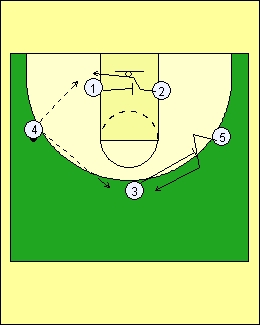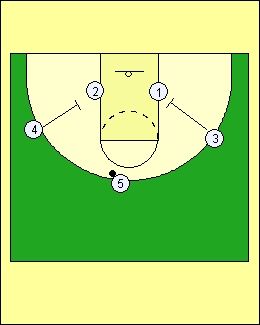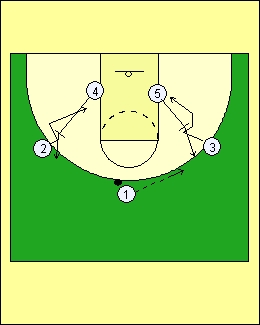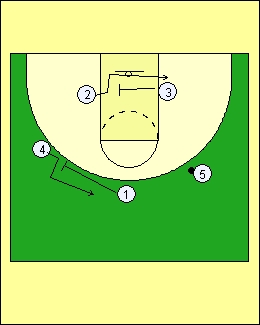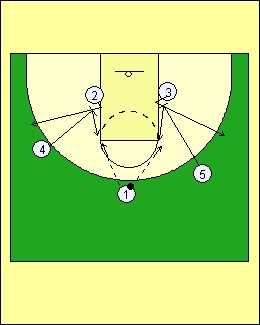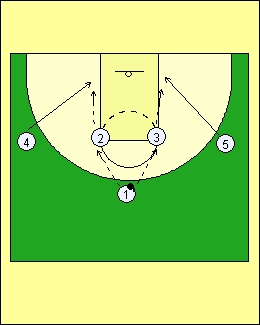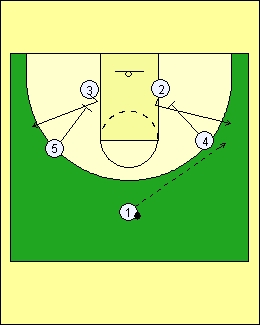
Simple
Offense
This is a basic offense that involves a constant series of down screens and cross screens. Your players should never be standing for long.
If your player is denied the ball he goes back and down screens if he is on the wing, or sets another cross screen on the perimeter if he is denied on top.
In this diagram, we see the offense starting with (#4 and 35) setting down screens for (#2 and #3). You will need to work with your players in regards to setting and using screens for the offense to be effective.
(#2 and #3) make good v-cuts and come out to the wings off of the down screens from (#4 and #5).
We will discuss other options to starting the offense a bit later.
This is a basic offense that involves a constant series of down screens and cross screens. Your players should never be standing for long.
If your player is denied the ball he goes back and down screens if he is on the wing, or sets another cross screen on the perimeter if he is denied on top.
In this diagram, we see the offense starting with (#4 and 35) setting down screens for (#2 and #3). You will need to work with your players in regards to setting and using screens for the offense to be effective.
(#2 and #3) make good v-cuts and come out to the wings off of the down screens from (#4 and #5).
We will discuss other options to starting the offense a bit later.
